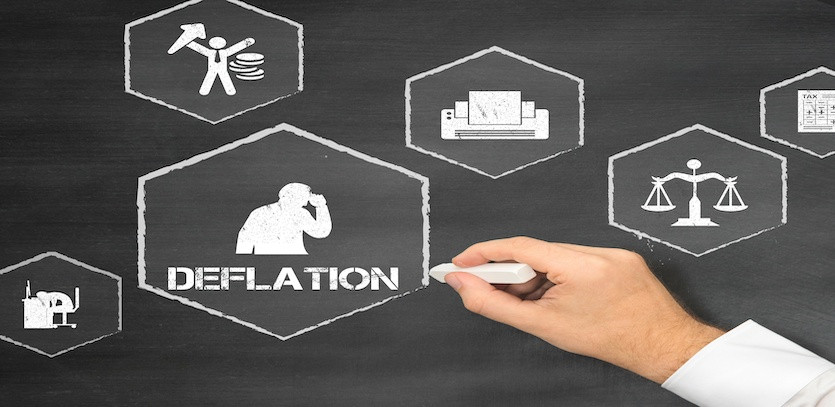The Impact of Falling Prices on the Economy
Experiencing a reduction in prices can often feel like a win, particularly when it relates to your beloved retail locations. But when these price drops apply to the whole economy, it's a phenomenon known as deflation, and that can spell trouble for both the economy and your finances.
Defining Deflation
Deflation represents a scenario in which the prices for goods and services, and thus assets, dwindle over time, causing an increase in purchasing power. In simpler terms, your current money can buy more tomorrow. This situation is a reflection of inflation, where prices gradually swell across the economy.
Deflation may initially appear beneficial, but it often heralds upcoming recession and economic hardship. The anticipation of decreasing prices may compel consumers to postpone purchases, hoping for lower costs in the future. However, reduced spending leads to lesser revenue for producers, potentially culminating in unemployment and escalating interest rates.
This creates a destructive cycle, further enhancing unemployment rates, lowering prices, and decreasing spending. Ultimately, deflation begets more deflation. Deflationary periods in U.S. history often coincide with significant economic downturns.
Measuring Deflation
To quantify deflation, economists use indicators like the Consumer Price Index (CPI), which tracks the pricing trends of commonly acquired goods and services, updating these changes monthly. If the aggregated prices, as measured by the CPI, are lower in one period than the previous one, it indicates deflation. Conversely, rising aggregated prices suggest inflation.
Triggers of Deflation
Deflation usually results from one of two major factors: reduced demand or increased supply. Both of these are rooted in the fundamental supply-demand relationship in economics. When overall demand declines while supply remains constant, the prices of goods and services drop.
Potential reasons for decreasing aggregate demand may include:
- Monetary policy: High-interest rates may prompt people to save rather than spend, thereby discouraging borrowing. Lower spending means reduced demand for goods and services.
- Reduced confidence: Negative economic events, such as a global pandemic, could lead to a fall in overall demand. Concerns about the economy or job security may push people to cut down on spending and save more.
When aggregate supply rises, increased competition might compel producers to lower prices. A fall in production costs could lead to an increased aggregate supply; lower production costs enable companies to produce more goods for the same price, leading to an oversupply and thus, reduced prices.
Repercussions of Deflation
While falling prices may seem favorable, they can actually induce negative economic consequences such as:
- Unemployment: As prices and profits decrease, companies may resort to staff layoffs to cut costs.
- Debt: Interest rates often escalate during deflation, rendering debt costlier. This often leads to reduced spending by consumers and businesses.
- Deflationary spiral: This is a cascading effect triggered by overlapping deflation elements. Falling prices may lead to reduced production, lower salaries, a drop in demand, and perpetually decreasing prices, worsening economic conditions.
Comparing Deflation with Inflation
Inflation signifies rising prices and a diminishing dollar value. Though it curtails your dollar's reach, it also devalues debt, ensuring borrowers keep borrowing and debtors continue paying their bills. Modest inflation is an expected part of the economic cycle—typical inflation rates range from 1% to 3% annually—and is usually indicative of sound economic growth.
You can also shield yourself from inflation to some extent. Investments can help your earnings outpace inflation, thereby helping preserve and increase your purchasing power.
Deflation, however, is often less favorable and usually accompanies economic contractions and recessions. A deflationary spiral can turn a challenging economic climate into a recession or even depression. Protecting oneself from deflation is also more complex. Unlike inflation, deflation escalates the cost of debt, pushing individuals and businesses to shun borrowing while they attempt to pay off their increasingly expensive existing debts.
In deflationary periods, cash investments, which offer little to no returns, are often the safest. Other investment types, like stocks, corporate bonds, and real estate, carry more risk during deflation due to the potential for businesses to struggle or fail outright.
Strategies for Trading in Deflation
What does a deflation trading strategy look like? It's a set of methods to invest and profit during deflation, including identifying the asset to trade, the trading direction, and how to diversify your investments.
During deflation, the broader stock market tends to bearish, as company profitability is hampered. A seasoned trader could short-sell stocks of the most affected companies. Another tactic could be to invest in companies with substantial cash reserves, as these firms are better positioned to capitalize on lower prices and make investments that could boost their stock value.
Investing in tangible assets, like real estate, gold, and silver, is a sound deflation strategy. These assets can often be purchased at a discount and usually maintain their value well during deflationary periods. Sometimes, prices may even rise as investors flock to these assets to protect their wealth.
Another strategy is to invest in Treasury bills and notes. Unlike stocks and corporate bonds, Treasury bonds typically perform well during deflation, as investors view them as safe-haven assets. Investing in foreign currency and potentially using it to purchase the country’s government bonds could also be an option.
Adjusting Your Portfolio for Deflation
To prepare for deflation, you may need to shift away from high-risk assets like stocks, corporate bonds, and cryptocurrencies. It's often safer to hold cash during such periods, given that these assets are likely to fall in price while your cash's purchasing power increases.
A more prudent approach might involve moving to safe-haven assets like gold, silver, and notably, Treasury bonds. Treasury bonds provide some returns and might also appreciate in value. Investing in real estate could also be beneficial, as it typically performs well during such times.
Specific Trading Strategies for Profiting from Deflation
Here are a few specific strategies to profit from deflation:
- Investing in tangible assets: Consider real estate, gold, and silver, which can often be bought at a discount and maintain their value well during deflation.
- Investing in Treasury instruments: Treasury bonds often perform well during deflation, seen as a safe-haven asset by investors.
- Short-selling stocks: For experienced stock traders, short-selling the stocks of the hardest hit companies is a viable deflation strategy.
- Investing in cash-rich stocks: Companies with ample cash reserves can leverage lower prices and make investments that might increase their stock value.
- Buying foreign currency: Consider buying foreign currency and possibly using it to purchase that country’s government bonds.
Conclusion
Deflation, while seeming like an appealing concept, can have dire consequences for an economy, leading to recessions and, in severe cases, depressions. Understanding how deflation works, what triggers it, and its potential impacts are crucial to navigating such economic periods. While deflation can present challenges for both individuals and businesses, being prepared and implementing the right strategies can help mitigate the risks and even potentially profit during these challenging times.





